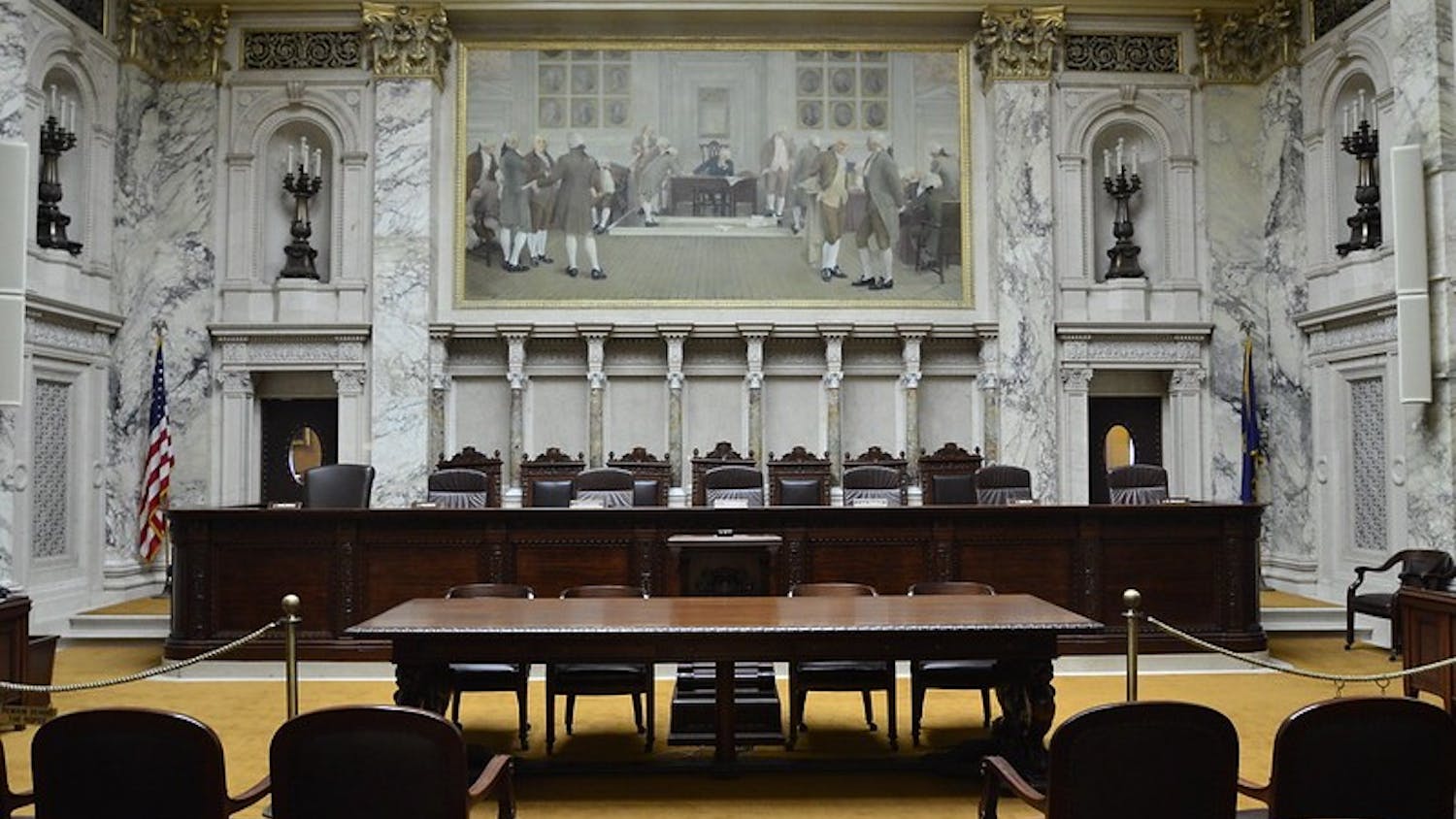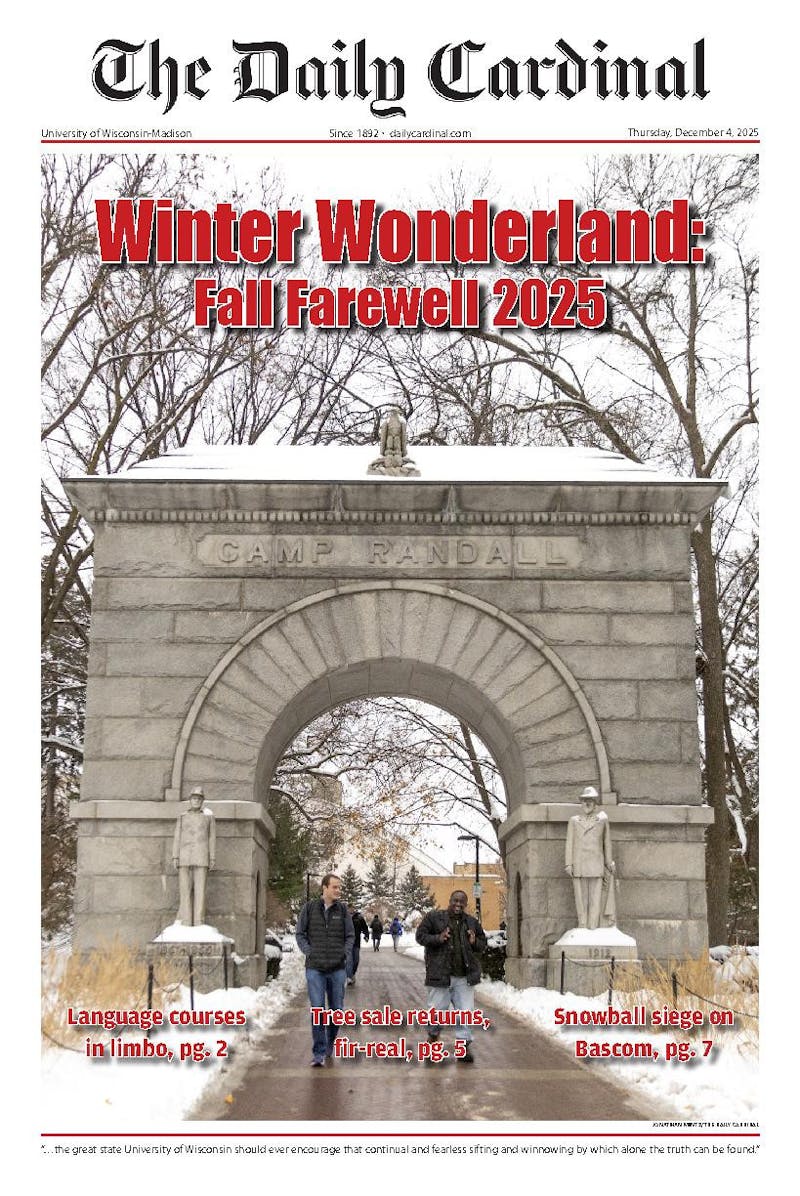Sunday's Super Bowl was exciting. It went down to the wire with the New England Patriots beating the Carolina Panthers in the final seconds with a 41-yard field goal. \Game day"" also has special meaning at Wisconsin. In a handful of Saturdays in the fall, throngs of sports fans get hammered, hang out with friends and talk football with each other. The public glamorizes professional and college athletes.
All of it seems benign until you take a step back and analyze the consequences of America's infatuation with sports. One may be surprised to learn that our society's obsession with sports harms the economy while damaging the inner cities and wrecking havoc on race relations.
An initial question is what role does the government have in subsidizing sports markets? The University of Wisconsin is a world-class public university that conducts research, instructs students and provides important services to the community. But by what measure should the highest paid employee at our institution be the head coach of the football team, Barry Alvarez, at $1.5 million a year?
Yes, our taxpayer-funded university is spending the same amount of money for one coach as about 18 tenured professors. Imagine the number of homeless shelters, soup kitchens and free clinics that could be set up if we pulled Alvarez's salary.
The problem magnifies as we head to the national stage. A Cato Institute Policy Analysis estimates the government has spent more than $25 billion in subsidizing the four major professional sports leagues; the MLB, NFL, NBA and NHL. The proponents for this subsidization, mostly the owners and the players, argue that new stadiums create jobs and expand the local economy. But for an investment to be worthwhile, it must generate a reasonable return. Almost all economic studies on the subject, including ones by the liberal-leaning Brookings Institute and conservative-leaning Cato Institute, conclude sports subsidies are not a good investment. Essentially, the wealthy players and owners are the only beneficiaries from the subsidies. This is a textbook definition of corporate welfare. The Cato Institute recommends electing ""individuals to office who oppose corporate welfare for sports teams and will privatize sports venues currently owned by the public sector.""
An even more damaging aspect of America's obsession with sports may be the social impact. It is no mystery that around 80 percent of basketball players and 68 percent of football players are black. Kids in the inner cities are taught the only way out of the ghetto is by dribbling faster than the next kid. The attention is not on going to the library or getting a quality education. But instead the glitz, glamour and glory of becoming a professional athlete are the motivating factors for a lot of these children.
A recent New York Times OP/ED by Brent Staples described basketball as the ""cancer on the black inner city."" The inevitable result is disappointment because only a small minority of students can use sports to obtain an education or make a living. Mr. Corey Johnson, an unemployed one-time high school basketball star describes that, ""basketball derailed me. When I was young, I was ashamed to tell people I wanted to be a writer. After all, nobody else here does that.""
University of Texas professor John Hoberman, author of ""Darwin's Athletes: How Sport Has Damaged Black America and Preserved the Myth of Race,"" frames the issue in terms of race relations. He believes white people need to admire blacks in the arena to make up for their condescension outside (in such areas as academics and work). Hoberman also thinks the current situation perpetuates the treatment of blacks as second class citizens and anti-intellectual.
There are clear benefits to college and professional sports. People in a winning sports town feel pride and solidarity. Participating in athletics encourages team work, discipline and a strong work ethic. There is also an enormous entertainment value to watching the events.
But the public needs to be aware of the economic and social pitfalls of sports. They should question the role of a public institution funding sports teams and stadiums. There is also a great need to reform the current federal tax code on the financing of professional sport facilities. Many people in the inner cities are given the false impression that sports are the only worthwhile pursuit. This cycle is reinforced by the students, citizens and fans who demand a winning sports team. The hope is for people to think twice before celebrating the next game.





